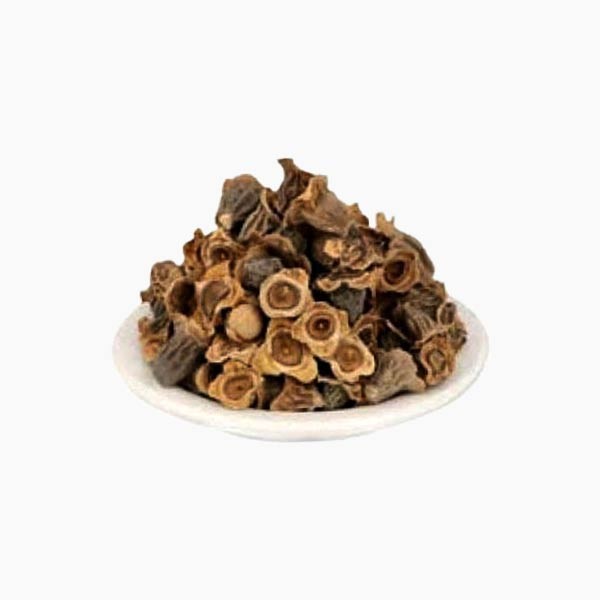Bay Khumba/बॉय खुम्बा
Bay Khumba/Careya Arborea (बॉय खुम्बा) : Bay Khumba is a deciduous tree that grows up to 15m-45 ft high. Its leaves turn red in the cold season. Flowers are yellow or white in color that become large green berries. The tree grows throughout India in forests and grasslands.
Bay Khumba is a species of tree in the Lecythidaceae family, native to the Indian Subcontinent, Afghanistan, and Indochina. It is known as Kumbhi in Hindi, and Slow Match Tree in English.
Careya Arborea is a medium sized deciduous tree, up to 20 m tall, the leaves of which turn red in the cold season. It is the Kumbhi of Sanskrit writers, and appear to have been so named on account of the hollow on the top of the fruit giving it somewhat the appearance of a water-pot. Wild pigs are very fond of the bark, and that it is used by hunters to attract them. An astringent gum exudes from the fruit and stem, and the bark is made into coarse cordage. The Tamil name Puta-tanni-maram signifies “water- bark-tree,” in allusion to the exudation trickling down the bark in dry weather. Bay Khumba
Bark surface flaking in thin strips, fissured, dark grey; crown spreading. Leaves arranged spirally, often clustered at the apices of twigs, simple, broadly obviate, tapering at base, margin toothed, stipules small, caduceus. Flowers in an erect raceme at the end of branches. Flowers are large, white. Sepals are 4, petals 4, free. Bay Khumba
Stamens are many, connate at base; disk annular; ovary inferior, 4-5-locular with many ovules in 2 rows per cell, style 1. Fruit a large, many-seed drupe, globosely to depressed globosely, crowned by the persistent sepals. Seedling with hypogeal germination; cotyledons absent (seed containing a swollen hypocotyls); shoot with scales at the first few nodes. Bay Khumba
Bay Khumba Benefits:
Snake bite antidote (fruit and bark), in treating body pain, fever, cold, cough, and leucoderma. The plant parts are also used to treat ulcers, healing wound, abscesses and dysentery.
The bark of the tree and the sepals of the flowers are well-known Indian remedies, and are valued on account of their astringent and mucilaginous properties, being administer internally in coughs and colds and applied externally as an embrocating.
It is a long established fact that a reader will be distracted by the readable content of a page when looking at its layout. The point of using Lorem Ipsum is that it has a more-or-less normal distribution of letters, as opposed to using 'Content here, content here', making it look like readable English. Many desktop publishing packages and web page editors now use Lorem Ipsum as their default model text, and a search for 'lorem ipsum' will uncover many web sites still in their infancy. Various versions have evolved over the years, sometimes by accident, sometimes on purpose.
There are many variations of passages of Lorem Ipsum available, but the majority have suffered alteration in some form, by injected humour, or randomised words which don't look even slightly believable.
Review
There are no review yet
Add A Review
Your email address will not be published.






